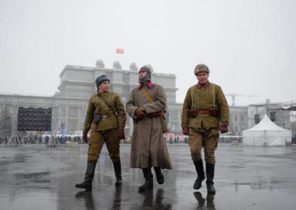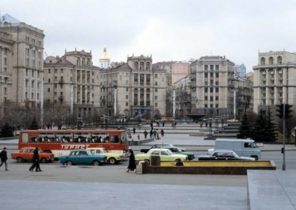
During the cold war, the United States took a form that meets the needs of the structure called “the military-industrial complex.” The United States played the role of “world policeman”, the structure consisting of the gun barons, the ruling classes and the Pentagon, has turned the country into a war machine.
In 1965, the former Dominican President Juan Bosch (Juan Bosch), was overthrown in a military coup with the support of the Pentagon, called the device “pentagonito”. In his book entitled “Antagonism”, published in 1968, Bosch stressed that the gigantic mechanism was invented as a replacement for imperialism. Just as fish need water, man — the-air, antagonism needs in the war.
Since the cold war, U.S. foreign policy increasingly directs the Pentagon. Of course, he’s not doing this alone, but together with such components of the military-industrial structure, Congress, think tanks, media and public authorities. How does this cooperation, it is possible to learn, for example, from the book of journalist James McCartney (James McCartny) published in 2015 called “the war machine of America: interest groups and the endless conflicts”.
“Antagonism” changed in his likeness and contradicting powers. The arms race between the United States and the Soviet Union, including nuclear weapons, was the subject of movies about space wars. On one side of the global arms market is USA/West, the other — the Soviet Union.
Dragons of the modern age, exposed in the form of war machine, a “victim” as described in fairy tales. To maintain arms market between the victims need to sow discord, strife, conflict, war, terror. Because the fuel for this machine is extracted from human blood.
USA spends on armaments in the world. More than all the other nine countries that are behind them in the top ten. US military spending is approaching a trillion dollars a year. It is at least 20% more than the expenditures during the cold war.
The forces that hold the arms market in their hands, in need of deepening conflicts among the victims, or potential customers of the market. Important role in deepening those conflicts play ethnic and religious differences. In most client countries ruled by “dictatorial regimes”. To stay on your feet, these regimes pay a kind of tribute to the military-industrial structures, primarily the United States and Russia. This is money that you have to pay for the peace and prosperity of the people. Hangars, warehouses in many countries is filled with obsolete military aircraft and weapons that have never been used.
To work the military-industrial structures between client countries is supported by the atmosphere of threat. The flames never give out. Temperature decreases or increases, depending on the situation. The largest customers “pensionistica” structures, American or Russian, are in the Islamic world. Recently, Saudi Arabia with the United States signed agreements worth almost $ 400 billion, of which 110 billion have weapons. How did this happen? Relations between Iran and Saudi Arabia have always been strained. During the recent skirmish, one side said: “I will hit you,” and the other replied: “I will hit you before you try to do it.” The result is obvious: Saudi Arabia signed the agreements, which provide life-giving water to the U.S. economy.
Meanwhile, Iran is one of the most prestigious clients of Russia. Tehran can also answer Riyadh any new agreement. Pentagonica structure move on rails that are laid where there are such contradictions. Most of these rails goes through the Islamic world. Unfortunately, the regimes in the Muslim countries spend more money on military instruments than on peace.







